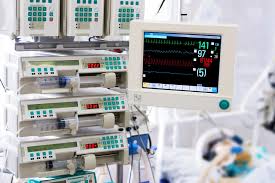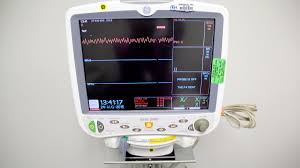
By Tequila Mockingbird
Los Angeles, CA (The Hollywood Times) 12/29/24 – I have a habit of waking up in the middle of the night, plagued by questions that make absolutely no sense but won’t let me go until I find answers. And trust me, I’ve spent many a sleepless night chasing down strange curiosities—like the one that’s haunted me for years: where do the sounds in hospitals, ICUs, or MRI machines come from?
 It started with a bizarre thought that’s stuck with me: Did Brian Eno design the quirky, ambient music in some of these machines? I’m not sure how or why this idea entered my mind, but my curiosity was out of control. I had to know the truth behind these eerie, mechanical symphonies.
It started with a bizarre thought that’s stuck with me: Did Brian Eno design the quirky, ambient music in some of these machines? I’m not sure how or why this idea entered my mind, but my curiosity was out of control. I had to know the truth behind these eerie, mechanical symphonies.
Turns out, the sounds that emanate from medical devices aren’t the result of some ambient music guru’s whim—they’re the product of a whole team of professionals working together to craft the perfect auditory experience. Here’s who’s behind the soundtrack of your next doctor’s visit:
- Industrial Designers: These folks focus on the overall user experience of a device, which includes its sound. They aim to make the machine as intuitive as possible, using sound to guide the user through its functions.
- Human-Computer Interaction (HCI) Specialists: These experts study how people interact with technology, specifically how we respond to sounds. They work to create noises that are useful, informative, and non-intrusive—because, let’s face it, you don’t want your MRI experience to feel like a horror movie soundtrack.
- Sound Designers: These are the true audio artists, working to create and manipulate sounds that integrate seamlessly with the devices. They collaborate with engineers to make sure the sounds enhance the user experience while avoiding irritation or confusion.
- Engineers: Electrical, mechanical, and software engineers all play a role in the sound design process. They ensure that the noises produced by medical devices are not only technically feasible but also meet safety and performance standards.
Key Considerations in Designing Medical Device Sounds:
- Usability: Clear, concise feedback is essential. A single beep might indicate a successful operation, while a different sound warns of a malfunction.
- Safety: In critical situations, sounds must be non-distracting and non-overwhelming. They should be designed to avoid auditory discomfort and ensure patient and staff well-being.
- Aesthetics: While practicality is paramount, the sounds should also contribute to a calm, soothing, and aesthetically pleasing experience. Think of it as a soundscape for healing.
- Accessibility: Sounds must be understandable and usable by people with varying levels of hearing ability. This ensures that all patients and healthcare providers are on the same page when it comes to important alerts.

Now, back to the Brian Eno question. While the ambient music legend is famous for his ethereal soundscapes, there’s no evidence that he’s specifically designed sounds for medical machines. However, Eno’s influence on ambient sound design is undeniable. His work in creating calming, atmospheric sound environments, like his Quiet Room installation at Montefiore Hospital in the UK, shows that sound can play a therapeutic role in healthcare settings. But when it comes to medical devices themselves, anyone with the right expertise—whether a sound designer or an engineer—can contribute to shaping the sounds that accompany our visits to the doctor.
So, while the thought of Eno hunched over a synthesizer crafting the perfect MRI beep may have melted my mind for years, it turns out that sound designers—not rock stars—are the real masterminds behind the strange symphonies of modern medicine. And that, my friends, is a much more satisfying answer than I ever could have imagined.